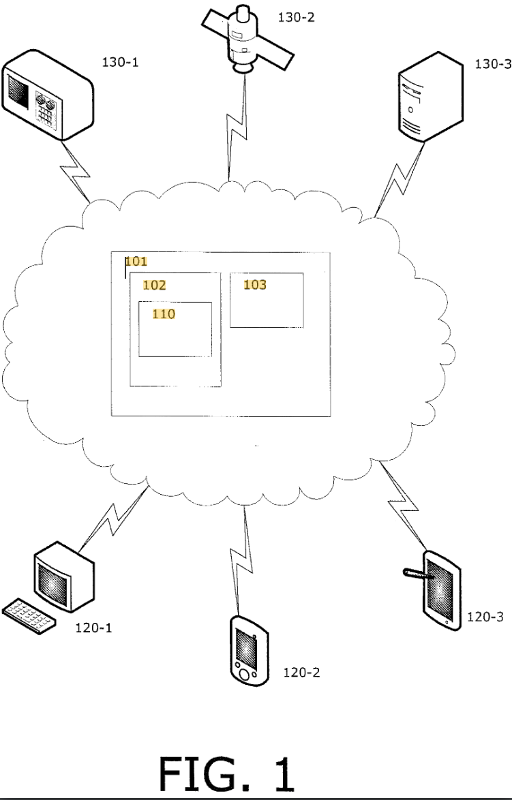PTAB: Ex parte Steven L. Kagen
Certain methods of organizing human activity, Practical application of abstract idea
PTAB Appeal 2022-000345
Abstract from Application on Appeal
A system and method for presenting real-time health information administers virtual questionnaires, automatically determines a user health status, and presents a visualization to a user indicating a likelihood of a symptom occurrence. The system and method presents results of the analysis to a user to predict health risks, analyze user symptoms, connect users with medical professionals, and provide marketing offers. The results may be presented as text, graphs, stationary maps, and/or animated maps.

Representative Claim on Appeal
- 1. A method of presenting real-time health information, the method comprising steps of:
- (a) administering by a user interface associated with a mobile device, a virtual questionnaire to obtain information regarding the user’s health status;
- (b) determining the location of the user using a location determination circuit associated with the mobile device;
- (c) obtaining environmental data from an internet-accessible database corresponding with the user’s local environmental conditions at the time the questionnaire is administered;
- (d) storing the information regarding the user’s health status and corresponding environmental data in a data store associated with the mobile device;
- (e) developing a data structure from which the health status of the user is correlated with the user’s local environmental conditions to identify causes of symptoms for the user;
- (f) repeating steps (a) through (e) a plurality of different times in accordance with a predetermined update schedule and upon demand by the user, and recorrelating health status with the user’s local environmental conditions to refine and enhance the data structure;
- (g) determining the current location of the user using the location determination circuit of the mobile device;
- (h) obtaining current or predicted environmental data from the internet accessible database at the current location of the user determined in step (g);
- (i) predicting future symptoms based upon the data structure and current or predicted local environmental conditions determined in step (h);
- (j) determining whether to deliver a warning of environmental risks that are predicted to induce symptoms in the user; and
- (k) presenting by a display associated with the mobile device a visualization indicative of the future symptoms if it is determined that a warning is to be delivered.
Rejection of Claims on Appeal
Claims 1, 3-12, 14, and 16-22 are rejected under 35 U.S.C. § 101 as directed to a judicial exception without significantly more. Appellant’s “disclosure relates to a system and method for providing health analysis.” Spec. 12. Specifically, [Appellant’s] disclosure relates to a symptom analysis application and method for creating, analyzing, individualizing, geo-locating, and displaying information regarding symptoms of allergy, asthma, sinus headaches, migraine, arthritis, and other medical conditions induced by a person’s unique responses to environmental exposures to allergens, air pollutants, and weather elements instantaneously in real time. Id. The Abstract section of Appellant’s Specification describes the invention as a system and method for presenting real-time health information^] administers virtual questionnaires, automatically determines a user health status, and presents a visualization to a user indicating a likelihood of a symptom occurrence. The system and method presents [sic] results of the analysis to a user to predict health risks, analyze user symptoms, connect users with medical professionals, and provide marketing offers. The results may be presented as text, graphs, stationary maps, and/or animated maps.
Summary of Appeal Analysis
In this appeal, the Appellant argues against the rejection of their patent application under 35 U.S.C. § 101. The patent application in question involves a method for predicting health-related symptoms based on environmental conditions and user health data.
The Examiner rejected the claims, arguing that the claims are directed to an abstract idea and do not integrate the abstract idea into a practical application. Examiner asserts that the claims recite certain methods of organizing human activity that for predicting allergies based on environmental conditions. The Appellant argues that their invention improves the capabilities and functionality of a mobile computing device to predict health symptoms based on forecasted or existing environmental conditions at the user’s location. They also argue that the claims are directed to a specific means for achieving the desired result and do not merely claim the result.
The court ultimately agrees with the Examiner, stating that the Appellant’s description of the advance and improvement makes it clear that generic computer components are utilized as tools to implement the abstract idea in a real-time online environment. The claimed operations are recited in purely functional form, devoid of any implementation details, which is similar to other cases where claims have been found to be patent-ineligible. Under the second step of the Alice test, the court considers whether the claim includes additional elements that provide an inventive concept. The Appellant argues that their method is not well-understood, routine, or conventional and addresses a problem in the prior art. However, the court maintains that the relevant inquiry is whether the claimed invention as a whole is unconventional or non-routine. The court finds that the claim does not include additional elements beyond the judicial exception that transform the nature of the claim into a patent-eligible application. In conclusion, the rejection of the patent application under 35 U.S.C. § 101 is affirmed.
